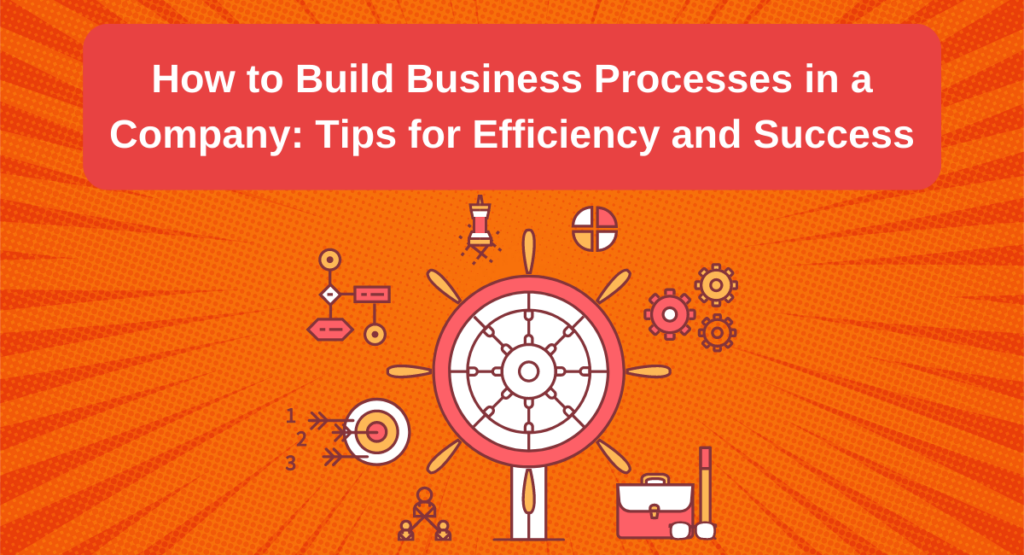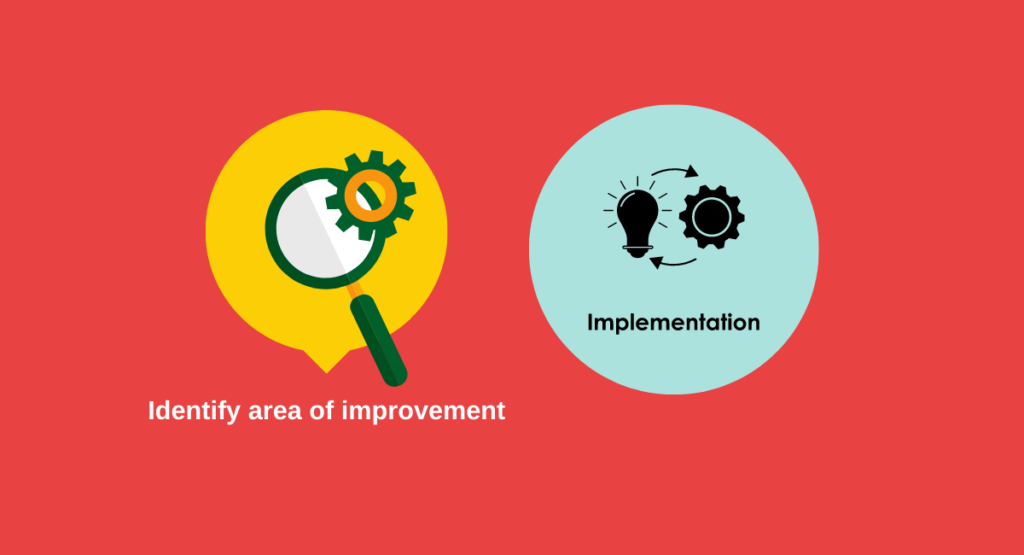How to Build Business Processes in a Company


Business processes are the backbone of any company. They help to ensure that tasks are running efficiently and effectively, which leads to a more successful business. Building strong business processes is essential for improving the performance of your company. This blog post will discuss some tips for doing just that!
What are business processes, and why are they important?
“Business process design is all about delivering value to the client and ensuring profit (or reach) for the organization.” NulabInc.
Business processes are the backbone of any company. The business process provides a clear and concise way to get work done and ensure everyone is on the same page. When business processes are efficient, it leads to a more productive and successful company.
When building business processes, consider these.
Define the scope of the process: What is included, and what is not?
Keep it simple: The more complex a process is, the harder it will be to follow and maintain.
Make sure it is repeatable: A good business process is repeatable with consistent results.
Test it out: Before implementing a business process, test it out.
How to identify business processes in your company

The first step is brainstorming a list of your company’s business processes. Brainstorming could include anything from customer service to accounting and human resources. Once you have a comprehensive list, you can break each process into smaller steps.
For example, if you are looking at the customer service process, you might have steps like this:
- Receive a customer complaint
- Investigate complaint
- Come up with a resolution
- Implement resolution
- Follow up with the customer
By breaking each business process down into smaller steps, you can start to see where there may be bottlenecks or areas of improvement. You can also begin assigning responsibility for each process step to different employees or departments.
You can start to look for ways to streamline them. Streamlining the business process might involve automating certain steps, eliminating unnecessary steps, or redesigning the process altogether. When your business processes are more efficient, you can improve your company’s bottom line and make it more successful.
Many resources can help you build your company’s business processes if you’re unsure where to start. A software program can automate many steps in business processes, making them even more efficient. Your company will be more successful and profitable by taking the time to understand and improve your business processes.
How to document business processes

Understanding how business processes work within your company is critical. To do this, you’ll need to document each business process. The business process document will help you see where inefficiencies exist and identify opportunities for improvement.
You can use the ideas below to document business processes:
Flowcharts: A flowchart is a graphical representation of a business process. Flowcharts are helpful for mapping out simple business processes.
Process maps: A process map is a more detailed flowchart version. The company can use process maps to map out complex business processes.
SOPs (standard operating procedures): SOPs are step-by-step instructions documenting how to complete a business process.
Once you’ve selected a method for documenting business processes, you’ll need to gather information from employees who perform the tasks. The information comes from interviews, surveys, and/or observation. Once you have this information, you can start mapping your business processes.
Get more out of your business
Get the best employee engagement content every week via mailing list
How to improve business processes for efficiency and success

Regarding business efficiency, there are a few key factors to keep in mind:
- You must clearly understand business processes and how they fit into your company.
- You need to identify areas where companies can make improvements.
- You need to put together a plan for making those improvements
Here are a few tips on how to improve business processes in your company:
Define business processes:
The first step is understanding business processes and how they fit into your company. You can do this by talking to employees and managers, reviewing existing documentation, or conducting process audits. Once you understand the current business processes, you can identify improvement areas.
Identify areas for improvement:
The improvement might involve automating certain steps, eliminating unnecessary steps, or redesigning the process altogether. By making business processes more efficient, you can improve your company’s bottom line and make it more successful.
Implement changes:
Once you’ve identified ways to improve your business processes, it’s time to implement those changes. Implementing changes might involve training employees on new procedures, changing how work is assigned or executed, or investing in new technology. Keep in mind to document any changes you make to track their effectiveness over time.
Identify who will be responsible for activities in the business process.
This will ensure that the appropriate person carries out each task and that the responsibility is clear.
Set up communication channels between those responsible for different tasks.
The communication will help to ensure that everyone is on the same goals.
Test the business process before rolling it out to the entire company.
The test will help you catch any errors and ensure the process runs smoothly.
Train employees on the new business process.
Employee training is essential for ensuring that everyone understands how the process works and knows their role in carrying it out.
By following these tips, you can build business processes that are efficient and effective in your company. Implementing new business processes can be challenging, but it’s worth it if your company becomes more successful.
Seven types of business processes for a company

Business processes are an essential part of business management. You can achieve better efficiency and success by implementing the right type of process. Here are the seven types of business processes and their associated benefits:
1. Order management process:
An order management process helps you to track and manage orders from customers.
Benefits:
- Improved customer satisfaction
- Reduced the number of lost or damaged orders
2. Sales Process:
A sales process helps you to track and manage sales from customers. The sales process can help you to improve customer satisfaction and reduce the number of lost or damaged orders.
Benefits:
- Improved customer satisfaction
- Reduced the number of lost or damaged orders
- Increased sales
- Improved efficiency
- Greater control over
3. Customer service process:
A customer service process helps you to track and manage customer inquiries and complaints.
Benefits:
- Improved customer satisfaction
- Reduced the number of lost or damaged orders
- Increased sales
- Improved efficiency
- Greater control over
- Improved customer service
- Fewer customer complaints
A customer service process is essential for businesses of all sizes. Ensure customers are satisfied with their service, resolve complaints promptly, and manage relationships effectively.
A good customer service process includes clear documentation and strategies for managing shifts in workload.
4. Project management process:
Project management processes help you to track and manage projects more effectively. Project management can help you to improve efficiency, ensure that all projects are delivered on time and within budget, and reduce the number of project failures.
Project management is a critical business process that allows companies to manage projects effectively from beginning to end. It includes the stages of project planning, initiating activities, monitoring progress, adjusting resources as needed, and completing projects on time and within budget.
5. Supply chain management process:
A supply chain management process helps you to track and manage the flow of goods and services.
The benefits of a supply chain management process include the following:
- Improved inventory control
- Reduced waste and spoilage
- Faster response to market changes
- Improved customer service
6. Human resources management process:
A human resources management process helps you to track and manage employee data. This can help you improve efficiency, reduce the number of employee absences, and ensure the company treats all employees fairly.
7. Financial management process:
A financial management process helps you to track and manage business finances more effectively. The finance team business process can help you improve efficiency, reduce the amount of money lost through poor financial planning, and make better business decisions.
What is business process management (BPM)?

Business process management, or BPM, is a system that helps the business improve the overall efficiency and effectiveness of an organization’s business processes. It automates critical tasks and ensures that all process components are coordinated and integrated. It involves identifying, analyzing, and improving business processes to achieve specific goals and objectives.
The company can use BPM to improve various business processes, including customer service, order fulfillment, manufacturing, and human resources. In recent years, the adoption of BPM software has increased as businesses have come to realize the importance of streamlining their business processes.
Businesses can improve and compete in today’s marketplace by automating business processes and creating a more efficient working environment.
Creating a BPM Strategy in a Company
A business process management (BPM) strategy helps companies to optimize their operational processes and business functions. By mapping out the key steps in a process, businesses can identify areas where they can improve efficiency and effectiveness.
In addition, BPM can help to standardize processes across different departments and locations. Standardization can result in better communication and coordination between other parts of the organization. When developing a BPM strategy, it is crucial to involve all stakeholders. The stakeholders include upper management, operational staff, and IT personnel.
By getting input from all sides, businesses can create a tailored strategy that meets the organization’s needs. Implementing a BPM strategy can be complex, but the rewards can be significant. By streamlining operations and improving communication, businesses can improve their overall performance and competitiveness.
How does BPM help to improve efficiency and success in a company?

Business process management (BPM) is an operations management that focuses on improving business processes. A business process is a set of activities that accomplishes a specific goal.
There are many benefits to implementing BPM in a company. BPM can help improve business processes efficiency, making them more streamlined and effective. In addition, BPM can help to improve the quality of business processes by ensuring that they are consistent and meet customer expectations. Finally, BPM can help to reduce the cost of business processes by making them more efficient and eliminating waste.
When implementing BPM in a company, there are a few tips to keep in mind to ensure efficiency and success. First, invite the stakeholders to join in designing business processes. Stakeholders’ acknowledgment will ensure that the process meets the needs of all involved parties.
Second, it is essential to document business processes clearly and concisely. A clear business process will make it easier for employees to follow the process and avoid errors. Finally, it is crucial to test business processes before rolling them out to the entire company. The business process testing will ensure the method is effective and efficient before implementation.
Make business processes more efficient and effective.

There are many ways to make your business processes more efficient and effective. Here are a few examples:
1. Implementing an eLearning course for employees on how to complete common tasks is a great way to improve efficiency. The course allows employees to learn new information more organized, resulting in faster process completion times.
2. Setting up standard work procedures will help eliminate needless chaos and confusion within the business. By having clear and concise guidelines in place, employees can know employer expectations, and the company will reduce chaos and confusion related to process completion.
3. Lean methodologies such as 5S, kaizen, and TOGAF can also be very helpful in making your business processes more efficient. These methodologies all focus on promoting a “just-in-time” philosophy where resources should run effectively and efficiently.
A good business process can help businesses save money by reducing waste, improving process management, and increasing worker satisfaction. Above all, make sure to use process mapping, as it is one of the most effective tools to optimize business processes and achieve desired results.
By mapping out each step of the process, you will be able to identify any issues or areas of improvement down to the individual detail level.
Frequently Asked Questions
What are common mistakes made when implementing business processes in a company?

A few common mistakes when implementing business processes in a company are:
Lack of communication among team members:
The process quickly falls apart when everyone works in different directions without clear guidelines.
Creating processes should not be done overnight
It takes time and effort to set up systems to help you achieve your goals.
Many companies underestimate the importance of developing standardized workflows that all employees follow. The standard process lets everyone know what to expect and eliminates the need for the extra communication.
Not having a business process can lead to inefficiency and bottlenecks. Employees may not be sure what their role is or what standards to live up to, leading to them working in a chaotic environment.
Conclusion
Building effective and efficient business processes is key to the success of any company. By taking the time to create well-defined processes, you can improve communication within your team, increase efficiency, and achieve goals more quickly.
Business processes are essential for any company looking to be successful. By implementing clear and concise business processes, you can improve communication among team members, increase efficiency, and achieve goals more quickly. There are many ways to make your business processes more efficient and effective, so be sure to explore all of your options.


